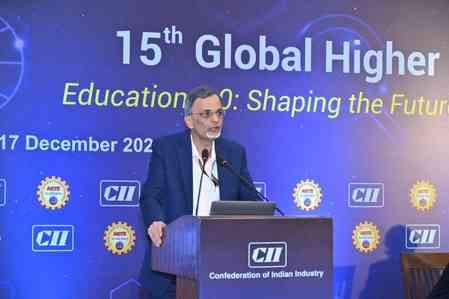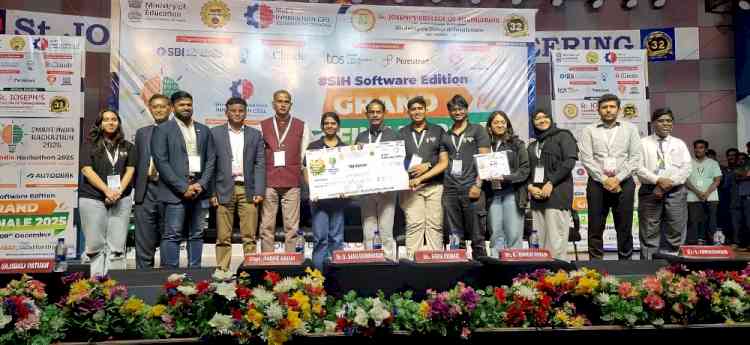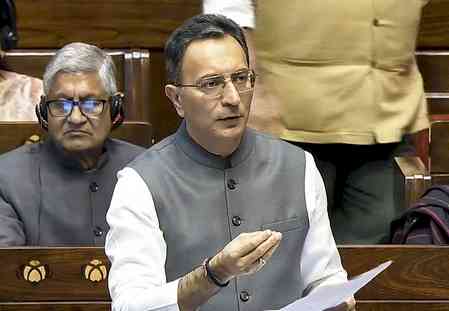Ancient Wisdom Meets Modern Science - IIT Roorkee Study Finds Sacred Shiva Temple Alignment Based on Natural Resource Hotspots
In a landmark study bridging ancient Indian wisdom with cutting-edge scientific analysis, researchers from IIT Roorkee, in collaboration with Amrita Vishwa Vidyapeetham (India) and Uppsala University (Sweden), have uncovered that the placement of eight iconic Shiva temples across India is not only of deep spiritual significance but also closely aligned with zones of high natural resource productivity.

Uttarakhand, September 24, 2025: In a landmark study bridging ancient Indian wisdom with cutting-edge scientific analysis, researchers from IIT Roorkee, in collaboration with Amrita Vishwa Vidyapeetham (India) and Uppsala University (Sweden), have uncovered that the placement of eight iconic Shiva temples across India is not only of deep spiritual significance but also closely aligned with zones of high natural resource productivity.
Published in Humanities & Social Sciences Communications (Nature Portfolio), the study reveals that these temples, stretching from Kedarnath in Uttarakhand to Rameswaram in Tamil Nadu, fall along a narrow north-south belt, known as the Shiva Shakti Aksh Rekha (SSAR), centered around the 79°E meridian. Using modern tools like satellite data, geospatial modelling, and environmental productivity analysis, the researchers found that this alignment coincides with regions rich in water availability, renewable energy potential, and agricultural yield.
The findings suggest that these ancient temple sites were likely chosen with a profound awareness of environmental abundance. For instance, although the SSAR covers only about 18.5% of the study area, it has the potential to produce 44 million tonnes of rice annually and holds an estimated 597 GW of renewable energy potential, more than India’s current installed renewable capacity. Northern sites such as Kedarnath are ideal for hydropower, while southern locations like Tamil Nadu align well with solar and wind energy generation.
“This research shows us that ancient Indian civilizations may have had a deep understanding of nature and sustainability, which guided their choices of where to build major temples,” said Prof. K.S. Kasiviswanathan, Principal Investigator and faculty in the Department of Water Resources Development and Management (WRDM) at IIT Roorkee.
Beyond the environmental findings, the study draws connections between temple symbolism and environmental planning. Many of these temples represent one of the five elements (Panchabhuta): Earth, Water, Fire, Air, and Space and have stood as spiritual and cultural landmarks for centuries. The research team believes that temple planning was not only based on cosmology or mythology but also on practical and empirical knowledge passed down over generations.
“By revealing the scientific reasoning behind the placement of sacred temples, we are not only enriching academic understanding but also uncovering how India’s civilizational knowledge can guide sustainable development today.” “This study is a compelling example of how ancient wisdom and modern science can complement each other,” said Prof. Kamal Kishore Pant, Director, IIT Roorkee.
The study also points to continuity in landforms and rainfall distribution patterns, despite centuries of environmental change. Archaeological evidence from regions like the Vaigai and Porunai river basins further supports the theory that ancient temple construction was deeply tied to water, agriculture, and stable landforms. These insights offer valuable lessons for contemporary challenges in resource planning and climate resilience.
“Our findings suggest that ancient temple builders were also environmental planners. Their choices were guided not just by faith but by a keen understanding of land, water, and energy resources”, said Mr. Bhabesh Das, lead author and research scholar.
“This is a remarkable interdisciplinary collaboration that bridges heritage and water resources. It demonstrates the value of revisiting ancient practices with modern tools to shape a more sustainable future.”, said Prof. Thanga Raj Chelliah, Head of the Department of Water Resources Development and Management (WRDM), IIT Roorkee.
The study offers a powerful reminder that India’s heritage may contain not only cultural depth but also strategic environmental insight waiting to be decoded and reapplied in modern development planning.


 City Air News
City Air News 











